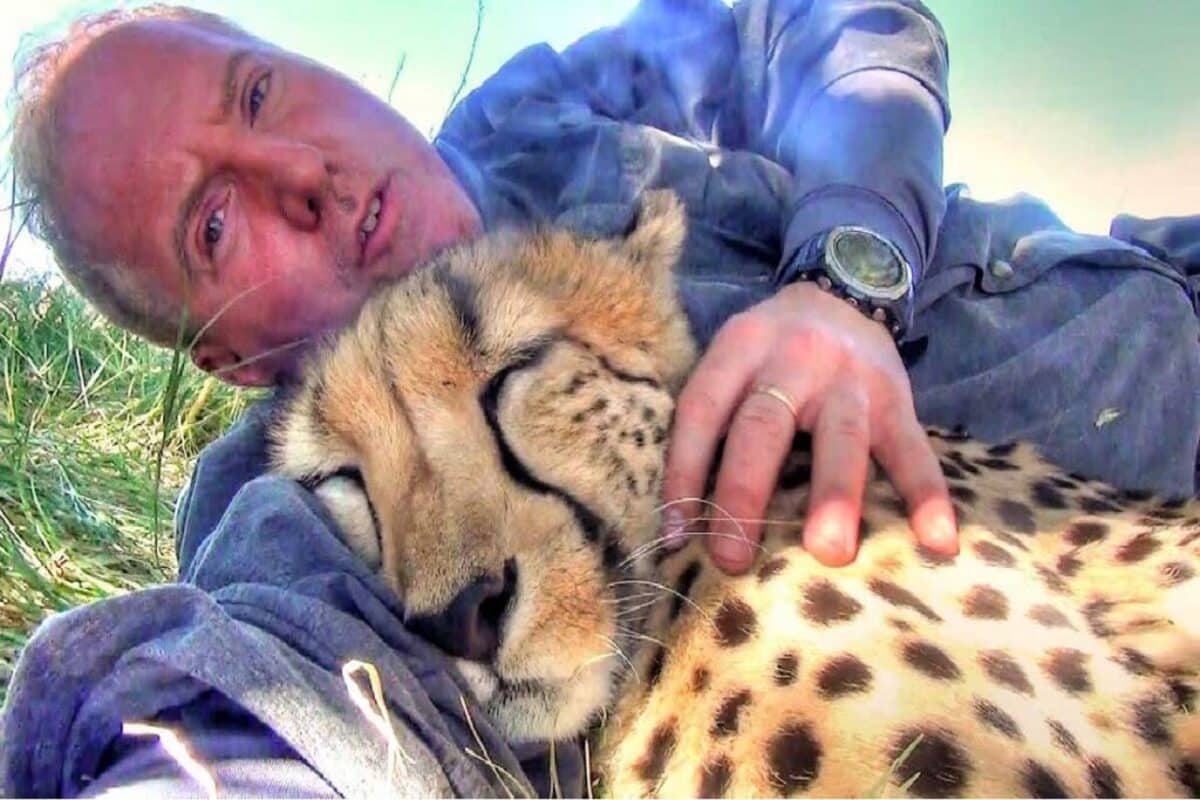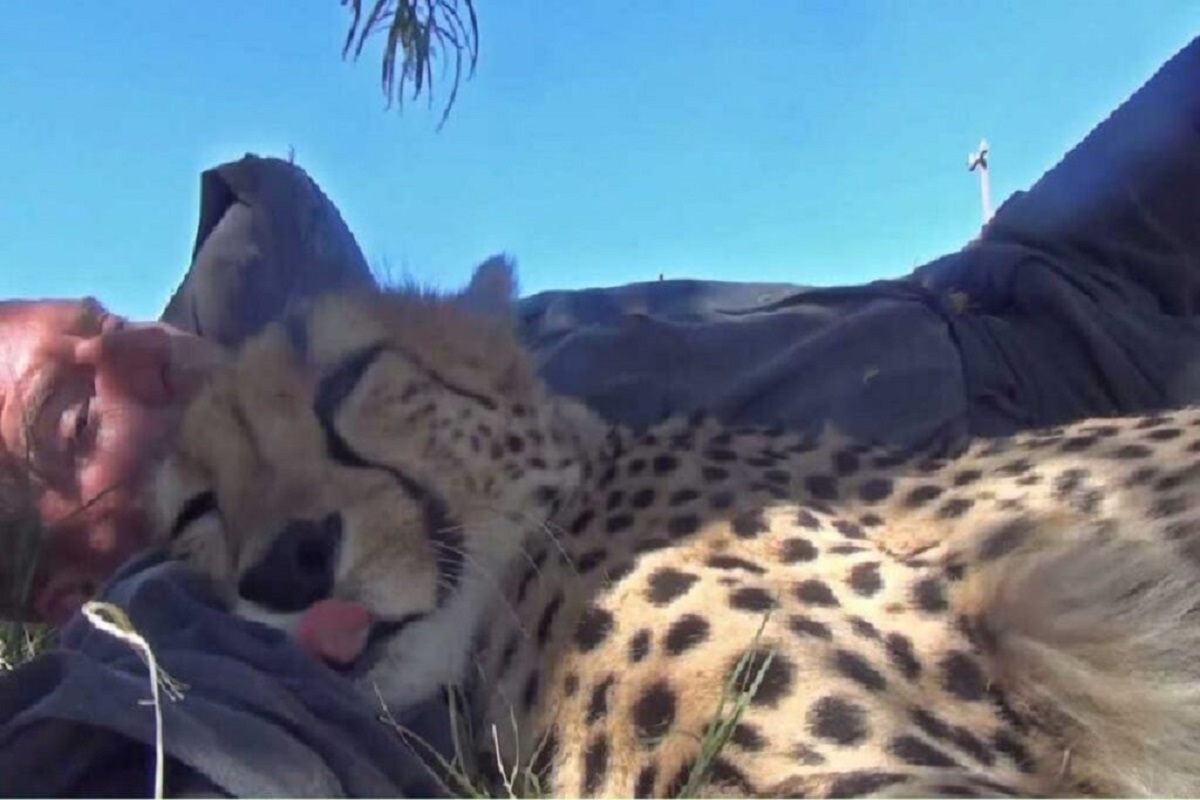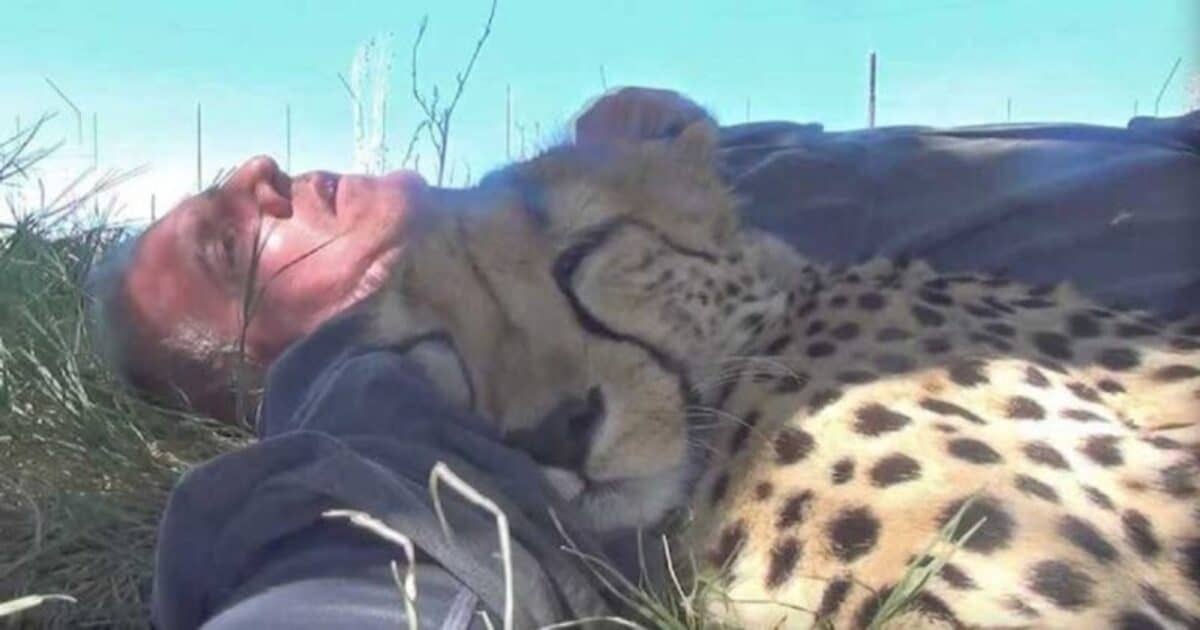A hush fell over the bushveld as the afternoon light thinned to honey, and a weary wildlife photographer drifted into a quick nap beneath a tree. When he opened his eyes, a cheetah lay pressed against his ribs, purring like a warm engine. The man was Dolph Volker, a conservationist and filmmaker, and the cat was Eden, a curious ambassador for her species at Cheetah Experience in South Africa.
A mission born from loss
Grief first pushed Dolph toward wildlife work after the death of his beloved dog. That heartbreak became fuel for advocacy, education, and hands-on support for endangered species. Volunteering at Cheetah Experience, he learned the rhythms of cheetahs, lions, mountain lions, and servals, building trust one careful hour at a time.
He arrived not as a thrill-seeker, but as a patient ally, showing respect for each animal’s boundaries. Over time, the shyest cats began to approach him with curiosity, testing his calm and reading his intentions. That quiet rapport set the stage for one of the gentlest encounters he would ever film.
The nap that changed everything
One hot day, Dolph stretched out under a tree, letting the breeze wash across his face. Eden padded over, drawn to the steady rhythm of a breathing human she already knew and trusted. She circled, brushed his shoulder, and then eased down, tucking her body against his as if he were simply part of the landscape.

When Dolph woke, he felt the velvet weight of Eden, her chest rising in slow, contented waves. Surprise gave way to awe, then to a gratitude so bright it felt sacred. In that moment, trust was not an abstract ideal but a living, breathing bridge between species.
“You don’t earn a cheetah’s trust by **conquering** fear; you earn it by showing up with **patience** and letting respect do the rest.”
Capturing tenderness on camera
Dolph is rarely without a camera, and that day he quietly documented Eden’s affection. The footage shows her nuzzling, playful nibbling, and grooming behavior—moments that challenge the stereotype of big cats as only ferocious. These scenes help audiences feel the emotional range of cheetahs, turning fascination into empathy.

Through social media and YouTube, Dolph shares these stories to explain cheetah behavior, dispel myths, and spotlight the species’ decline. Views become awareness, and awareness becomes support, powering the very programs that keep cats like Eden safe.
Why moments like this matter
A single cuddle may look like a sweet anecdote, but it reflects years of ethical care and relationship-building. It also puts faces—whiskered, spotted, alert—to a conservation crisis often reduced to numbers. Cheetahs face shrinking ranges, dwindling prey, and increasing conflict with people.
- Habitat loss fragments wild landscapes, isolating cheetah populations.
- Illegal trade and snaring push already vulnerable cats toward extinction.
- Human–wildlife conflict rises as farms expand into corridors.
- Climate pressures amplify stress on prey and water sources.
- Underfunded protection leaves rangers and sanctuaries without resources.
Practical solutions exist, and they work best in concert. Protecting corridors, investing in anti-poaching teams, and supporting community-led coexistence can stabilize populations. Responsible ecotourism and science-based breeding programs add resilience where wild numbers are fragile.
The “cheetah whisperer” effect
Fans call Dolph the “cheetah whisperer,” but his method is no mystery. He listens, moves slowly, and lets the animals dictate the pace. By modeling humble, ethical interaction, he shifts public expectations—from spectacle to stewardship.
His images offer rare access to the cheetah’s social grace, inviting people to care beyond the initial thrill. When followers learn how a purr can soften anxiety or how a head-butt signals affection, conservation becomes personal, not just philosophical. That emotional link is often the missing ingredient in policy and fundraising alike.
Eden’s lesson
Eden’s nap beside a sleeping human is not a trick or a stunt; it’s the fruit of consistent kindness. It shows what can blossom when animals are given choice, space, and time to feel safe. It also reminds us that protection is not only fences and funds, but relationships built on respect.
In a world moving too fast, a purring cheetah and a resting volunteer created a small island of peace. From that island, a message travels far: empathy is a conservation tool, and stories can be as powerful as statistics. If we make room for both, the wild may yet have the quiet it needs to heal.

